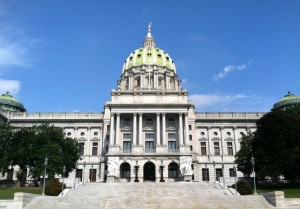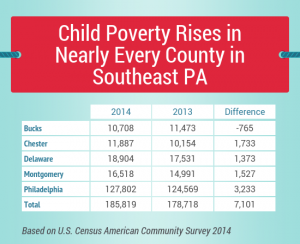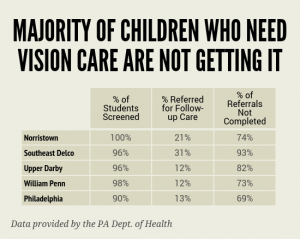WHAT STOPS AND WHAT GAP IS CREATED IN A STOPGAP BUDGET?
The Pennsylvania Senate just passed a bill that is called a “stopgap budget.” House leadership has indicated they support this approach. The Governor has also expressed willingness to take this approach, if his partners in the legislature will reach agreement with him on the parameters for a final budget compromise before he signs such a bill into law (the governor has up to ten days to veto a bill or it becomes law). Such an agreement would have to include compromises by all parties on new revenues needed to close the state’s current budget deficit and meet the public’s demand for increased spending for public schools and Pre-K.
Legislators advocating for the stopgap approach explain that by passing a short-term budget they will protect citizens and social service providers from service interruptions because state funds are not flowing. Already some social service agencies, including Congreso, a Philadelphia based provider, have laid off staff. The pain being caused by the budget impasse is real and it will get worse.
But the problem with the so-called stopgap budget is that it begins to spend state funds on public services in spite of the fact that there aren’t enough state revenues to cover those services for a full year. It simply puts off the problem to the late winter or spring when the state coffers run dry. Senator Daylin Leach указывает на то, “Spending money on some things without having any idea how much we will ultimately spend on other things, and without knowing what our tax structure will be, is a recipe for fiscal catastrophe.”
Obviously the hope of those pushing for a short-term fix is that before funds run out, the legislature and Governor will reach a compromise. Unfortunately there is no certainty that an agreement will be reached. Worse yet, the stopgap budget sets into motion a state budget that mirrors the level of state spending last year – which is far below the benchmark needed to restore the hundreds of millions of dollars in cuts to public education that were in place last year. It also means no new investment in early childhood education.
In many ways the stopgap budget is just that. It’s likely to stop the momentum that has been built to invest $400 million more in public education (via a fair and transparent school funding formula) and for expanded access to Pre-K, and leave the state with a huge budget gap.
кликните сюда to demand a better course of action.
WHAT DOES SOUTHEASTERN PA HAVE IN COMMON WITH TALLAHASSEE?
What could our region possibly have in common with Florida’s capital city? Listen to this: new Перепись numbers released this week show that there are 185,819 children in Bucks, Chester, Delaware, Montgomery, and Philadelphia counties that lived in poverty in 2014. That’s nearly the same number of people who live in the Sunshine State’s capital.
Every county except Bucks saw an increase in the number of children living in poverty from 2013 to 2014. The data shows that despite improvements in our nation’s economy, thousands of children continue to struggle with poverty.
Nationally, about one in five children live in poverty and children are more likely to live in poverty than any other age group. So what can be done to turn the tide of child poverty? Congress can take major steps toward reducing child poverty by approving the Child Poverty Reduction Act of 2015. The bill would create a Federal Interagency Working Group on Reducing Poverty tasked with developing a national plan to cut the number of children living in poverty in half within a ten year period. Laying the groundwork is a good first step toward reducing poverty for our kids. кликните сюда to tell your Congressperson to support the Child Poverty Reduction Act of 2015.
Eliminating child poverty is not just a government responsibility, but also a moral responsibility. Join PCCY, POWER and representatives from all faiths at the 22nd Annual Children’s Sabbath on Sunday, October 11th at 2:30 pm at the Cathedral Basilica of Saints Peter and Paul. кликните сюда for details.
DO KIDS WHO NEED VISION CARE GET IT?
More than two-thirds of children in our region’s poorest school districts who need vision care are not getting it, according to new data obtained by Public Citizens for Children and Youth. Analysis of vision care screenings in Norristown, Southeast Delco, Upper Darby, William Penn and Philadelphia school districts found that while nearly every child received a vision screening at school, the vast majority of children who were referred for follow-up care, never received treatment.
There are two big reasons why so many kids who need follow-up vision care are not getting it. First, low-income families in these districts may not have vision care in their health insurance plans or are unaware that public health insurance covers vision care and glasses. Second, Pennsylvania state law prohibits undocumented children from enrolling in Pennsylvania’s CHIP program. Their families must either pay out of pocket for private health insurance or pay high costs for visits to the eye doctor and glasses.
PCCY is teaming up with Wills Eye Hospital, Eagles Youth Partnership and Visionworks to provide free eye care and, if needed, two free pairs of glasses to all kids at Give Kids Sight Day on Saturday, October 24th. You can help us make this day special for kids by signing up to volunteer. кликните сюда Быть втянутым.




